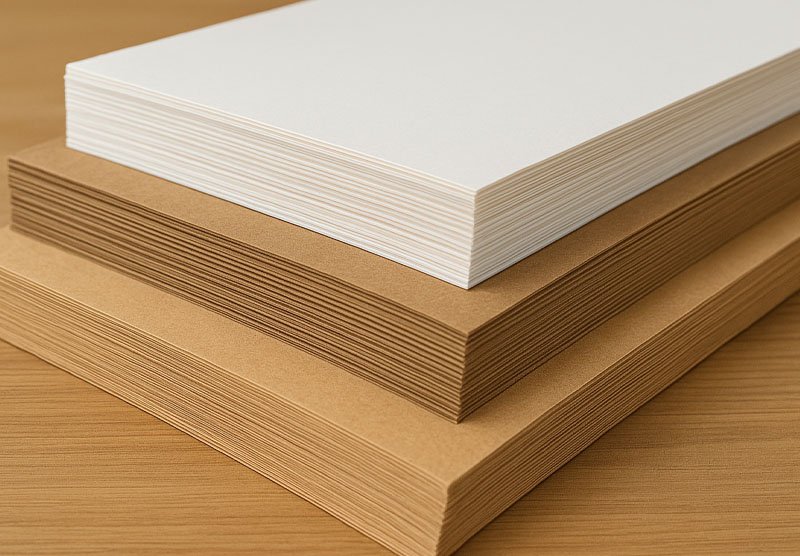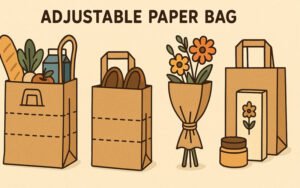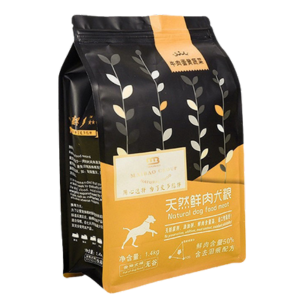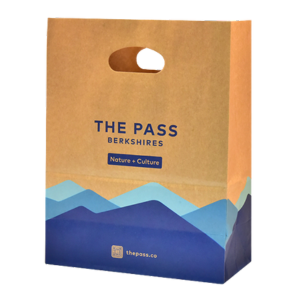Everyone loves paper bags for being eco-friendly, but most people don’t know what actually goes into making them.
Buyers often assume “it’s just paper,” but that’s like saying a car is “just metal.” The truth? The choice of raw materials decides strength, sustainability, and cost.
Let me walk you through the raw materials behind paper bags, so next time you source packaging, you know exactly what you’re paying for.
Paper bags are made from more than just kraft rolls. They include fibers, coatings, adhesives, printing inks, reinforcements, and even handles—each material contributing to durability, cost, and eco-credentials. Understanding them helps importers, distributors, and brand owners make smarter sourcing decisions.
If you’ve ever wondered why one bag collapses in rain while another holds greasy food like a champion—this breakdown will answer it.
Why Raw Materials Matter in Paper Bags?
Raw materials make up 60–70% of the production cost of paper bags. That means your supplier’s material choice is the single biggest factor in both price and performance.
Cheaper suppliers often cut corners—using weaker recycled paper, thinner coatings, or cheaper inks. The result? Bags that fail under stress. And once a customer loses confidence in your packaging, they lose confidence in your brand.
That’s why understanding the raw material composition is more than technical knowledge—it’s strategic business knowledge.
Kraft Paper: The Backbone
The most important material in paper bags is, of course, the paper itself. But not all paper is created equal.
- Virgin Kraft Paper: Made directly from wood pulp, with long fibers that give superior tear resistance. Ideal for premium shopping bags and courier packaging. Costs more, but delivers unmatched strength.
- Recycled Kraft Paper: Produced from reclaimed pulp. Cheaper and greener, but shorter fibers mean less tensile strength. Widely used for grocery or lightweight retail bags.
- Bleached (White) Kraft: Chemically treated for a clean, white finish that’s perfect for luxury branding. Carries a premium over natural brown kraft.
- Food-Grade Paper: Designed for direct food contact, compliant with FDA and EU standards. Often greaseproof or heat-resistant.
We often engineer hybrid solutions—blending virgin and recycled pulp for the sweet spot of cost, strength, and sustainability.
Coatings and Laminations: Protection Against the Elements
If kraft is the backbone, coatings are the armor. They make paper bags perform under tough real-world conditions.
- Water-based coatings: A thin layer that makes bags resistant to rain or condensation. Adds durability without harming recyclability.
- PLA (cornstarch-based) film: Biodegradable and compostable, used in food and courier bags. Costs more, but fully aligns with eco-regulations.
- Greaseproofing agents: Essential for takeaway and fast food packaging. Prevents oils from soaking through the fibers.
- Heat-resistant layers: Protects bags holding hot meals, soups, or baked goods.
Coatings usually add 5–20% extra to raw material cost, but without them, your bag may literally melt away in real-world use.
Inks and Printing: Branding That Lasts
A paper bag isn’t just packaging—it’s a walking advertisement. And printing is what makes your brand shine.
- Water-based inks: Most common, eco-friendly, affordable, and safe for food packaging.
- Soy-based inks: Even greener, with sharper colors, but slightly higher cost.
- Flexographic and offset printing: Advanced techniques that ensure logos and graphics stay vivid without weakening the bag fibers.
Low-quality inks can seep into paper, reduce fiber strength, and cause cracking along folds. We use certified inks designed for both durability and sustainability.
Because no one wants their brand logo smudged before the customer even gets home.
Handles, Reinforcements, and Glue: Small Parts, Big Impact
Handles and reinforcements may seem minor, but they can make or break a bag—literally.
- Handles:
- Twisted paper handles (cost-efficient, recyclable)
- Flat paper handles (stronger for heavier loads)
- Rope, cotton, or ribbon handles (luxury feel, higher cost)
- Reinforcements: Bottom and side inserts (usually cardboard) prevent collapsing under weight.
- Adhesives: Water-based glue is common, but hot-melt adhesives add extra strength for courier and heavy-duty bags.
Though small in volume, these materials can add 10–20% to total bag cost depending on design.
Market Dynamics: Why Material Costs Change
Even if the recipe stays the same, prices swing based on global supply and demand.
- Pulp prices: Kraft paper cost depends heavily on wood pulp availability.
- Energy costs: Paper production is energy-intensive; rising oil or gas prices increase costs.
- Environmental policies: EU bans on single-use plastics drive demand (and price) for kraft.
- Recycling regulations: When China limited waste paper imports, recycled pulp costs spiked worldwide.
That’s why savvy buyers don’t just compare bag prices—they track raw material trends to negotiate smarter.
Case Study: Coffee Chain
A U.S. coffee chain came to us struggling with soggy takeaway bags. Their supplier used thin recycled kraft with no greaseproofing. Cheaper, yes. Reliable, no.
We redesigned their bags using virgin-recycled kraft blend, FDA-certified greaseproof coating, and reinforced bottoms. Costs increased slightly, but complaints dropped by 70%, and customer satisfaction went up.
The moral? The right raw materials aren’t a cost burden—they’re a brand investment.
Future Trends in Paper Bag Materials
Material innovation is accelerating, and tomorrow’s paper bags will be even more advanced.
- Nanocellulose reinforcement: Ultra-strong, lightweight fibers for maximum durability.
- Edible coatings (yes, really): Some labs are developing food-safe coatings that are literally edible.
- AI-driven production: Reduces waste in cutting and coating, lowering material costs.
- Circular economy design: Bags made entirely from locally recycled fibers, cutting transport emissions.
We’re not just watching these trends—we’re filing patents and testing prototypes to lead the market forward.
Conclusion
Paper bags may look simple, but they’re built from a complex mix of raw materials—kraft paper, coatings, inks, adhesives, reinforcements, and handles. Each choice impacts durability, sustainability, and cost.







